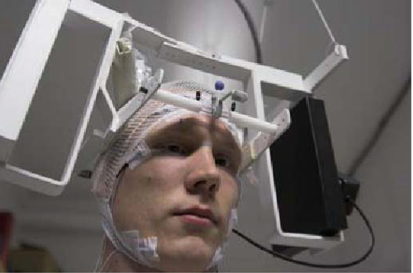He referred me first of all to Salford 2003, which I wrote about here last month, and noted that there was a followup study involving more rats. The problem again is whether the “dark neurons” that were reported really represent brain damage and whether they were caused by microwaves or by scooping the rats’ brains out, slicing them like baloney, and infusing them with chemical stains for observation under an electron microscope. In a review article, the researchers themselves note that while one laboratory in Turkey got similar results, three others in the United States, Japan, and France have failed to replicate the experiment. Other studies from the Salford lab have suggested that microwave radiation may cause leaks in the protective blood-brain barrier. But the findings are called into question by the puzzling conclusion that lower levels of microwaves appear to produce more leakage than higher levels do. Other studies have found no effect at all.

From Arnetz 2007
In the next paper Mr. Bruno cited, Arnetz 2007 (The Effects of 884 MHz GSM Wireless Communication Signals on Self-Reported Symptoms and Sleep), volunteers took turns wearing a helmet-like contraption that held a microwave transmitter a few inches from their heads. Subjects who were exposed for three solid hours to microwaves of about the intensity of those emitted by a cell phone took six minutes longer to fall asleep than the control group, which received a “sham” exposure. They also experienced an average of 8 minutes less of the deepest kind of sleep, called stage 4.
It’s curious that anyone could sleep at all under such circumstances. The paper refers obliquely to “sleep initiated one hour after exposure” without saying what did the initiating. Sleeping pills or a hypnotist’s dangling watch?
The second part of the Arnetz experiment is even murkier. About half of the 71 subjects considered themselves electrosensitive — they blamed cellphone emanations for various health complaints. But the study found that they were no more likely to experience headaches from microwaves than from the sham exposures. Confusingly, the nonsensitives did report more headaches. The authors don’t supply the numbers, making the outcome impossible to judge. During the exposures the subjects were also given memory and performance tests and questioned about their moods. These results were not reported, presumably because they weren’t significant.
The third paper on Mr. Bruno’s list was Bise 1978, which reported that extremely low intensities of radio waves and microwaves — far below what existed even back then in urban areas — caused “temporary changes in brain waves and behavior” in 10 subjects. The experiment, which has gone unreplicated now for 32 years, was done by William van Bise, a researcher into the paranormal who might have served as a model for Walter Bishop, the mad scientist on the TV drama Fringe. During the early 1990s an eccentric R.J. Reynolds tobacco heir apparently invited Mr. van Bise and his wife, Elizabeth Rauscher, to use his estate in North Carolina as a research center for something called “psychotronics.” (The story appears in bits and pieces scattered around the Web.) They were joined there by Andrija Puharich, a champion of the psychic Uri Geller, who claimed to bend spoons with his mind. All were evicted after their benefactor died.
The rest of what Mr. Bruno presented me with didn’t involve cell phone radiation but rather the lower frequencies from power lines and broadcasting stations: Historical Evidence That Electrification Caused the 20th Century Epidemic of “Diseases of Civilization” by Samuel Milham has been countered in a rebuttal by Frank de Vocht, a lecturer in Occupational and Environmental Health at the University of Manchester, who called the work “fatally flawed.” A study from Finland reported that TV and FM radio signals focused by a reflecting wall caused spontaneous hand movements in a few subjects. Finally Mr. Bruno mentioned the work of Martin Blank, an associate professor at Columbia, who has reported that low frequencies might induce a stress reaction in cells. Again this is a controversial view.
So we are still at square one with a minority of much-disputed reports suggesting that a whole range of electromagnetic radiation might possibly have subtle biological effects, which may or may not be harmful. If your aim is to dismantle the wireless communication structure of the planet, including radio and television, along with the worldwide electrical grid, that is not very much to go on.
George Johnson
The Santa Fe Review
